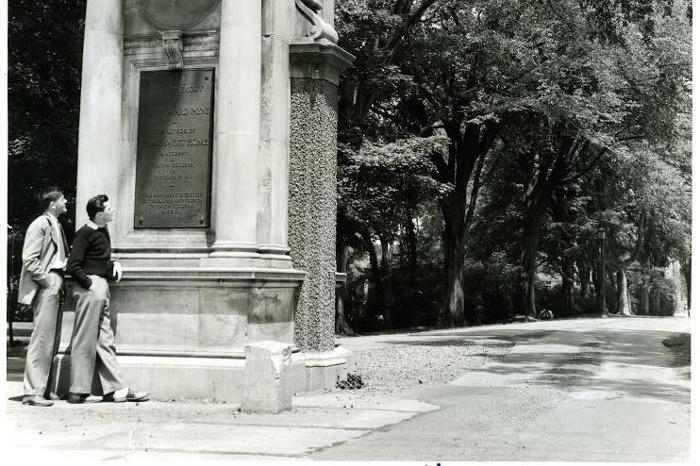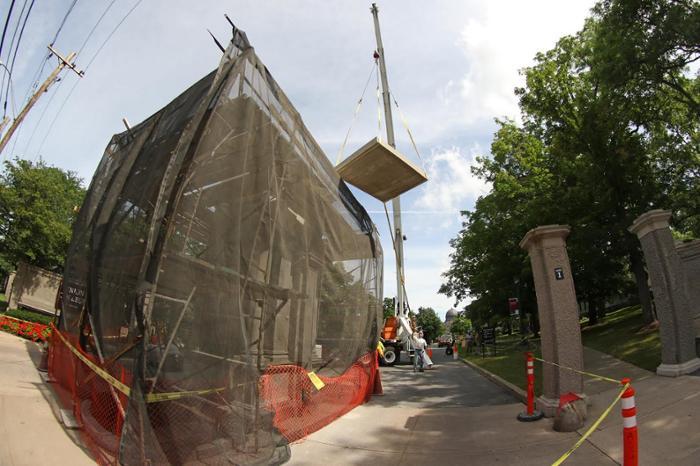Mid pleasures and palaces though we may roam, Be it ever so humble, there’s no place like home. A charm from the sky seems to hallow us there, Which, seek through the world, is ne’er met with elsewhere
John Howard Payne’s brief time as a student at Union was untypical of students of his time. A precocious, creative, headstrong 15-year-old from Long Island who had already had a play produced in New York, Payne reacted to being shipped upstate to college as “I should to enter the state’s prison, for the same term.”
A favorite of President Eliphalet Nott, Payne distinguished himself as a student by writing and publishing, between July 1806 and November 1808, The Pastime, a weekly journal of student poetry, reviews and humorous stories.
The sixth of nine children, Payne abruptly left Union for New York City after his mother died and his father faced financial issues. Lured by the stage at an early age, he established himself as an actor, playwright, poet and author. He also spent time in England, the first American actor to invade the British theater.
But it was the words to a simple, sentimental ballad he wrote for his 1823 opera, Clari, the Maid of Milan, that became Payne’s legacy. Enormously popular, particularly
during the Civil War, “Home, Sweet Home” remains an enduring standard today.
An exile from home splendor dazzles in vain
Oh give me my lowly thatched cottage again
The birds singing gaily that came at my call
And gave me the peace of mind dearer than all
The song’s popularity is the primary reason that for more than a century, an 18-foot-tall stone monument to Payne has welcomed those who enter campus off Union Street.
Built in 1911 and dedicated at the College’s 115th commencement, the monument is the centerpiece of Payne Gate, a 90-foot-wide gateway that replaced the Blue Gate as Union’s main entrance. It was designed by George B. Post & Sons, the architect of Alumni Gymnasium.
This summer, the 67-ton monument is getting a much-needed makeover. Decades of deterioration hastened by Schenectady’s harsh winters left the stone looking shabby. Water seeped into the limestone. Vegetation sprouted from cracks in the cap. Chunks were ripped from its base, an errant vehicle or bicycle the likely culprit.
The monument has not been immune from mischief, either. On the eve of the football game with Rensselaer Polytechnic Institute in 1939, students from the cross-town rival sloppily smeared red paint across the stone.
The incident prompted President Dixon Ryan Fox to cancel a pep rally for fear “emotionally unstable” students would retaliate against RPI’s buildings.
How sweet 'tis to sit 'neath a fond father's smile,
And the caress of a mother to soothe and beguile!
Let others delight mid new pleasures to roam,
But give me, oh, give me, the pleasures of home.
Periodically over the decades, the monument has been patched, painted or washed. But those efforts did little to restore its prominence. Payne needed an intervention.
“It looked incredibly unattractive,” said Loren Rucinski, director of Facilities Services. “In fact, it wasn’t in great shape when I got here 30 years ago. This is something I’ve wanted to do for a long time.”
First, stonecutters from Adam Ross Cut Stone in Albany measured every inch of the monument. Using Indiana limestone and Barre Vermont granite, they meticulously matched the stone’s 104 individual pieces.
“We’re calling it a restoration, but it’s really a replication,” Rucinski said.
Led by Elio Stocchetti, master mason of AJS Masonry Co. in nearby Clifton Park, workers surrounded the monument with scaffolding, and, armed with small hammers and other tools, spent two weeks methodically chipping away the old stone.
“You have to have a passion for this,” said Stocchetti, who learned his trade in Italy. He has been handling stone for nearly 32 years.
Aided in part by a crane, Stocchetti and his crew must carefully reassemble the 104 numbered new pieces that have been cut, essentially creating a brand new monument.
“It’s like a big puzzle,” said Paul Matarazzo, associate director of Capital Projects and College Properties, who is overseeing the project.
Bronze plaques attached to the front and back of the stone, one describing Payne, the other with the words to “Home, Sweet Home,” are also being refurbished.
When the month-long project is completed, the stone should look as fresh as it did in 1911, Rucinski said.
“It’s an important part of our history, and I’m glad we were able to have the funding to get it done.”
To thee I'll return, overburdened with care;
The heart's dearest solace will smile on me there;
No more from that cottage again will I roam;
Be it ever so humble, there's no place like home.
In 1842, Payne was appointed consul at Tunis. He died there in 1852. His remains were eventually returned to Washington, where a memorial service attended by President Chester Arthur, Class of 1848, was held. A full choir sang “Home, Sweet Home.”
A nomad most of his life, Payne once said of his song: “Surely there is something strange in the fact that it should have been my lot to cause so many people in the world to boast of the delights of home, when I never had a home of my own, and never expect to have one now - especially since those here at Washington who possess the power seem so reluctant to allow me the means of earning one!”
The song’s hold on people prompted Cornelius E. Franklin ’33 to propose the gateway at an alumni event in New York City in 1910. President Charles Richmond lent his support.
“If John Howard Payne, through his song of ‘Home, Sweet Home’ has ever been an influence in your life, has touched a chord of stirred feelings that ennobled, inspired, or consoled you – you may wish to have some little share in this memorial to an apostle of home life,” read the pitch seeking donations of $1 to $50 for the project.
At the dedication, a Harvard professor spoke about Payne’s life. Metropolitan Opera soprano Alma Gluck closed the ceremony with a moving rendition of “Home, Sweet Home.”

